A Private Tour today, in North Norfolk. It was a cloudy but bright morning, with lighter easterly winds than of late, and although the cloud thickened and it started spitting for a time in the afternoon, thankfully the worst of the rain held off until after we were finished.
We started at Cley. Before we even got out of the car park, we could already hear the Grasshopper Warbler reeling and as we crossed the road we could see it perched on a curl of brambles in the reeds by the path. We stood and watched it for a while. It was amazingly obliging, perching up in full view just a couple of metres from the path. Olive-brown above, streaked with black, this Grasshopper Warbler is particularly bright lemon yellow below, its long undertail coverts with black arrowhead marks. Fantastic views at close quarters, which really allowed us to appreciate the finer details.
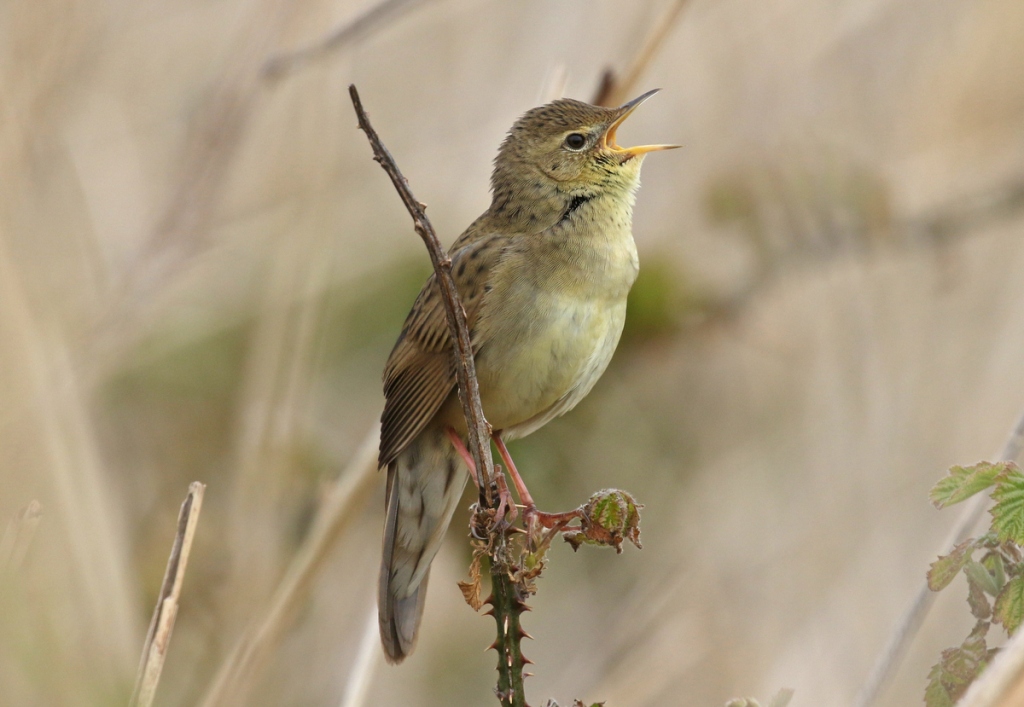
Occasionally it would drop down to the ground to feed, disappearing in the tangled vegetation, but after a short while it would reappear again and start reeling once more. Reeling is the name for the some of Grasshopper Warblers, if you can call it a song. It sounds more like a cricket, a mechanical repetitive clicking. It was amazing how long it could sustain a burst of reeling, the volume rising and falling as it turned its head from side to side.
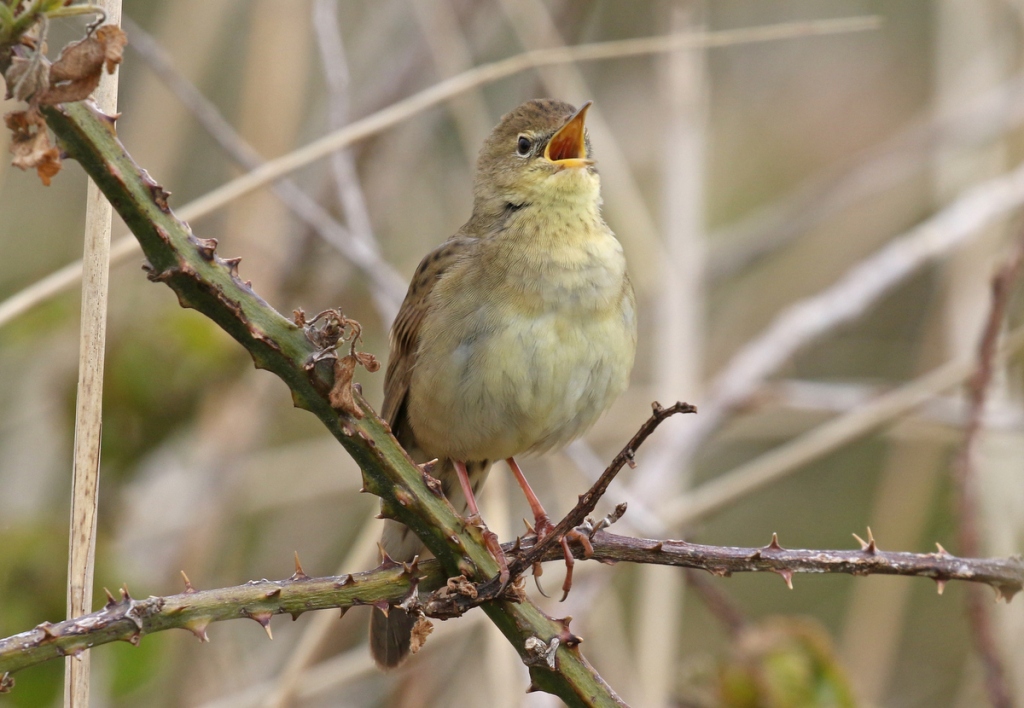
There were other things to see as we stood transfixed by the Grasshopper Warbler. A couple of Marsh Harriers circled over the reeds. A Little Ringed Plover flew over calling and dropped down towards the car park. A couple of Sedge Warblers were singing too, one repeatedly song-flighting up from the reeds, and a Cetti’s Warbler shouted a few times from further up.
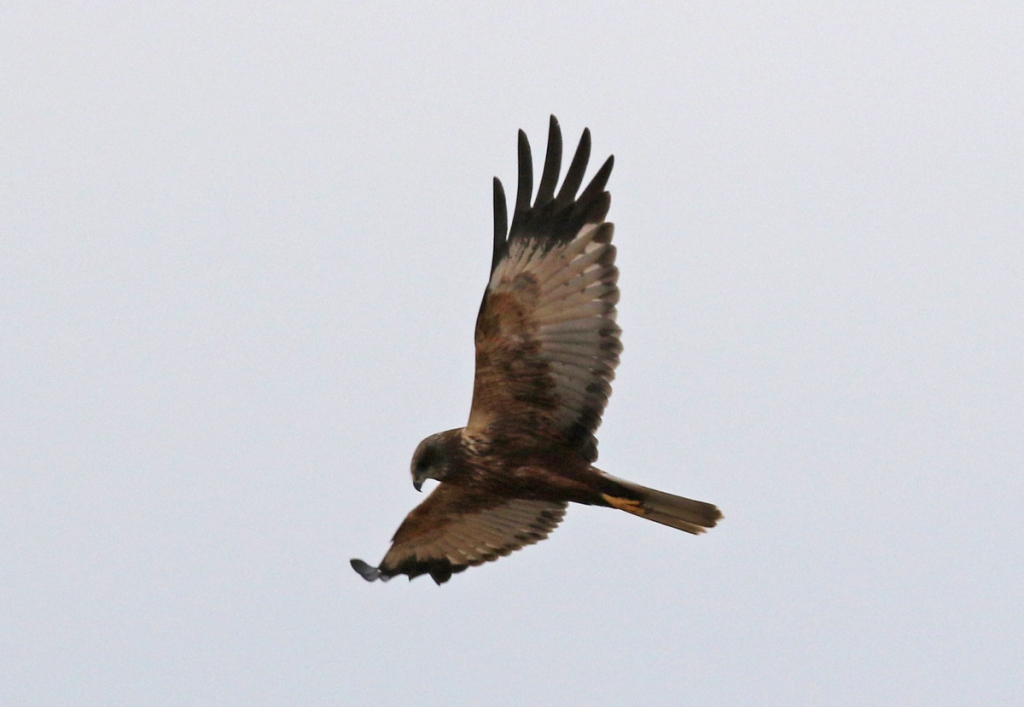
Eventually, we had to tear ourselves away from the Grasshopper Warbler. One of the aims for today was to have a bit of scope tuition – a new purchase needed setting up and some advice in getting used to using it. So we walked back to the car park and got everything out, setting up the scopes in the picnic area and starting with a scan of Pat’s Pool. We could see lots of Avocets, a few Black-tailed Godwits and a single Ruff around the water. A couple of Great White Egrets were chasing each other around, out in the middle of the reedbed, flying up and around. One or two Bearded Tits zoomed past over the reeds.
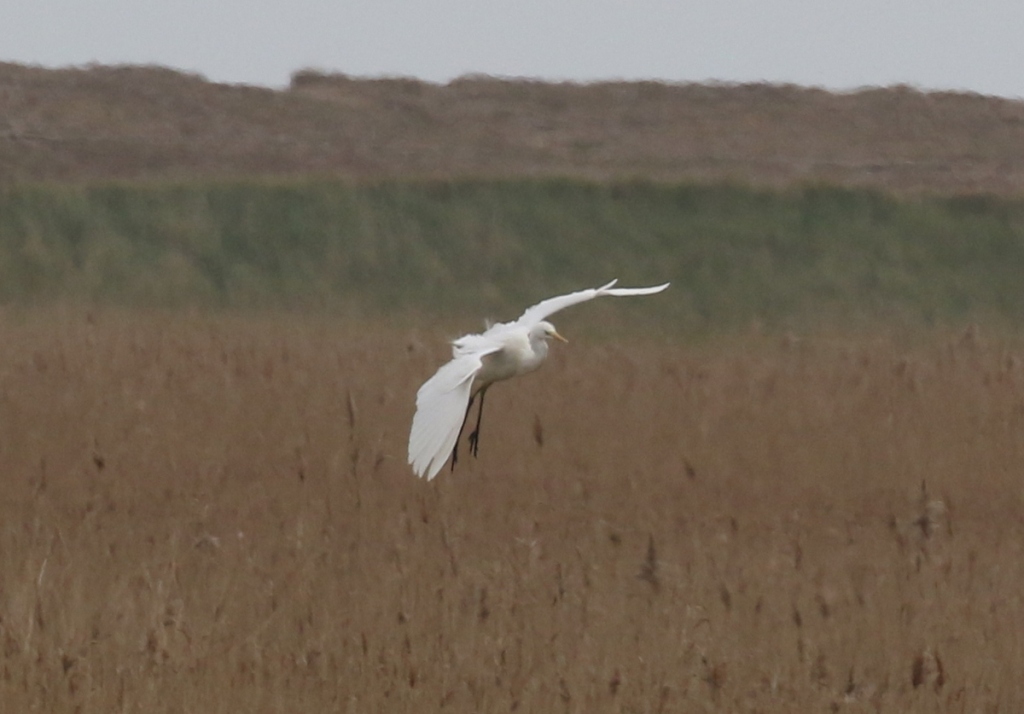
There seemed to be more warblers around the car park this morning. A Blackcap was singing from the hedge by the road, but a second male was flitting around the edge of the picnic area at the same time. Likewise, a Common Whitethroat was singing from the brambles and we watched another flitting around in the alexanders on the bank below the Visitor Centre. A Willow Warbler sang briefly too, somewhere around the houses further along.
The theme continued as we made our way east along The Skirts path, past the Grasshopper Warbler which was still reeling away. There were lots of warblers in the bushes beside the road, another two or three Willow Warblers, a couple of Chiffchaffs, Blackcaps and Common Whitethroats. It felt like there had been a small arrival this morning. We heard several Reed Warblers singing – more seem to have arrived here in the last few days, but they remained hidden down in the reeds. Some of the Sedge Warblers were more obliging, perching up in full view as they sang.
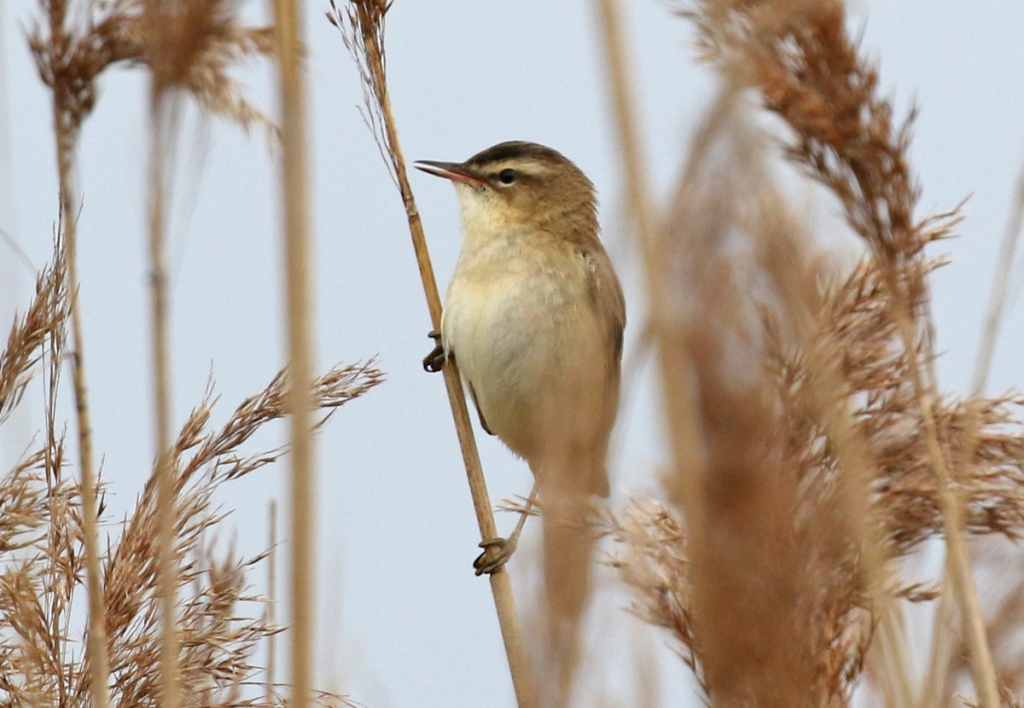
There had been a couple of Swifts earlier, over the East Bank, and we had seen a big flock of hirundines hawking over the front of Walsey Hills as we walked that way, but by the time we got there, they had all disappeared. We set off up the East Bank and stopped to look out over Pope’s Pool with the scopes. There were still lots of ducks here, Shoveler, Teal and Wigeon, plus some smart Gadwall. A pair of Common Pochard flew past. As well as the breeding Redshank and Lapwing down in the grass, we found a single Bar-tailed Godwit out here too.
A Spoonbill was feeding in one of the wet channels down in the grass, mostly hidden from view until it broke off and lifted its head. Eventually it worked its way out of the channel into a pool nearer the bank, where we could get a better look at it. A smart adult, with yellow-tipped black bill, bushy nuchal crest, and mustard yellow wash across its breast.
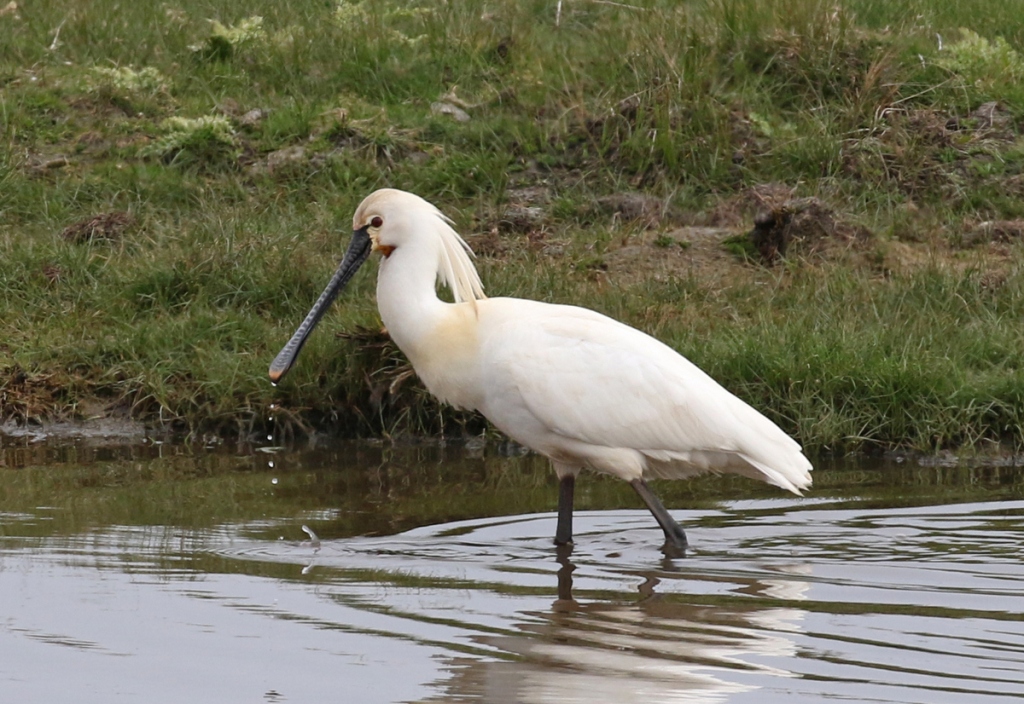
The hirundines had obviously drifted off east, as we could see some in the distance now, over the back of Arnold’s Marsh. As they gradually came closer, we could see a mixture of Swallows and Sand Martins, the latter presumably birds from the sand cliffs along the coast to the east. Scanning higher we spotted several Common Swifts with them, with their swept back wings and slim, cigar-shaped bodies. Our first Swifts of the year. Eventually we had some of them right above our heads, with other breaking off to continue on their way west.

As we continued up along the bank, we heard a Yellow Wagtail call and looked over to see two flying in over the grazing marsh. One continued on west, but the other appeared to drop down onto the Serpentine. We carried on to see if we could find it, but it took off again just as we walked up. It had obviously dropped in with a second Yellow Wagtail which was already on the ground, as we watched the two of them now flying off west.
We stopped again to look out over Arnold’s Marsh. There were several more Bar-tailed Godwits on here, some now fully in bright rusty breeding plumage. A little flock of Dunlin were flitting between the islands, and on the shingle spits on the edge of the water we could see several Ringed Plover and a very smart breeding-plumaged Turnstone, properly justifying its full name of ‘Ruddy Turnstone’ now, with the rich chestnut stripes in its upperparts.
We decided to have a quick look at the sea, but there didn’t appear to be much moving today – a couple of distant Sandwich Terns and we just caught the back end of two Red-breasted Mergansers disappearing off east. So we decided to head back. The Grasshopper Warbler was still reeling next to the path as we walked back to the car park, so we couldn’t resist stopping again for another listen. Bird of the day!
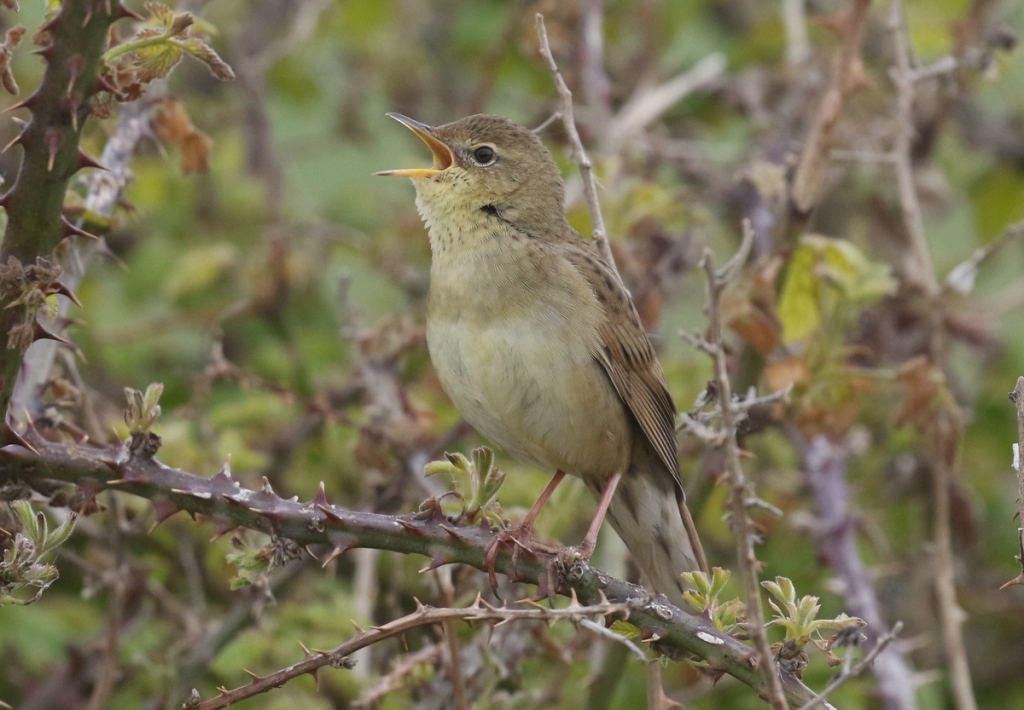
We drove west to Wells next. There were several Brown Hares in the fields as we parked. Scanning the pool to the west of the track first, we could see a couple of Little Ringed Plovers and a single moulting male Ruff out that side, along with all the breeding Lapwing and Redshank. A Common Sandpiper was right over the back of the pool the other side, with another Little Ringed Plover nearby.
Walking down the track, we continued to scan the pools. There had been a couple of Jack Snipe here earlier, feeding around the clumps of rushes, but we couldn’t find any sign of them now (they had presumably disappeared into the vegetation and gone to sleep, as Jack Snipe tend to do during the day!). We could still see several Common Snipe though.
Several of the pairs of Lapwing here already have young and we had a much better view of the tiny balls of fluff on long legs from the path. A flock of Whimbrel flew over and headed out towards the saltmarsh.
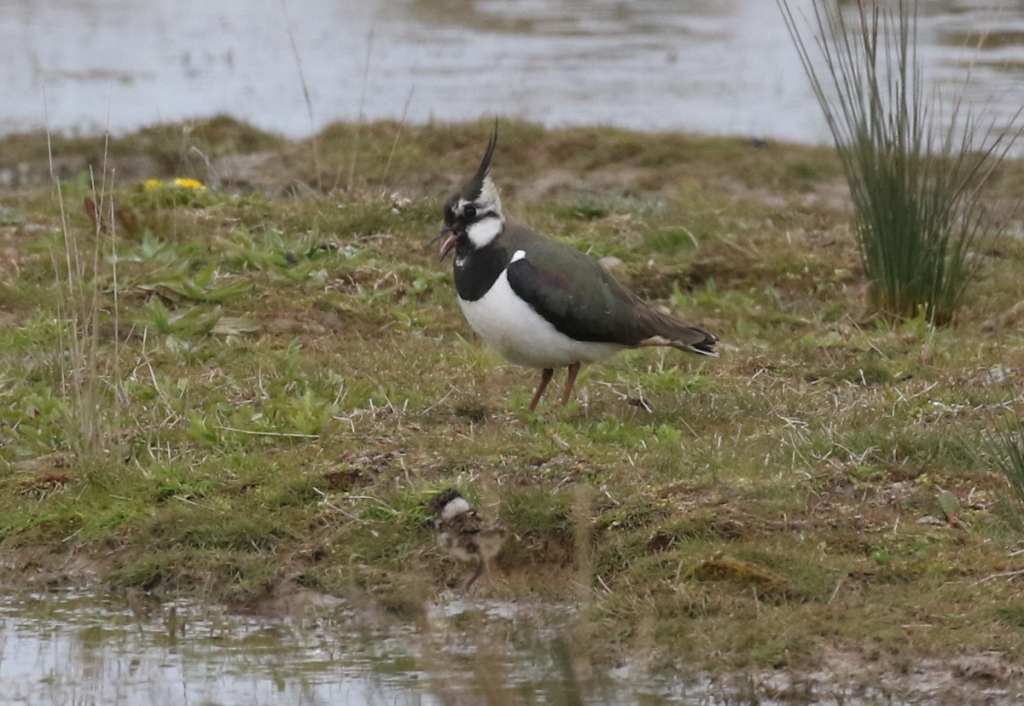
After a break for lunch in the car park, we carried on west. A couple of House Martins over the road at Holkham were our first this year. We were planning to spend the afternoon at Burnham Overy, but the weather had deteriorated now and it was rather cooler and greyer. Still, we set off down the track. There had been some Ring Ouzels first thing this morning, in the fields by the stile, but there was no sign of them here now. A Lesser Whitethroat was rattling from the hedge just beyond, another fresh (and slightly late) arrival.
Scanning the grazing marshes further up, we did find two Wheatears out on the grass, a very smart male and a browner female. A single Brent Goose in with the Greylags seemed to be having an identity crisis, and was calling loudly while the rest of the Brents flew round and settled out in the harbour. There were a few Tufted Ducks asleep by the reeds.
We had heard several Mediterranean Gulls on the walk out, and now we found one down on the grass which was quickly followed by a second, both smart adults with jet black hoods and bright red bills. Obviously a pair, we watched as they pecked at the grass and tapped each others’ bills. A pair of Little Grebes on one of the pools appeared to be building a nest platform.
Continuing on to the seawall, the tide was out in the harbour. There were a few waders on the mud, including a single Knot and a couple of Grey Plover, but they kept disappearing into the deep channels. We turned to scan the grazing marshes the other side and managed to pick out a distant pair of Barnacle Geese and a couple of Pink-footed Geese scattered in amongst all the Greylags.
Looking back towards the road, we could see a small flock of Starlings feeding down in the grass way off in the distance. As we scanned past them, another black bird dropped down from the hedge and we caught a flash of white on its breast. When it hopped out into view, we could see it was a Ring Ouzel. It was a long way over, but we could see what it was in the scope. A second Ring Ouzel dropped down onto the grass nearby and we thought there might be one or two more out of view- presumably the birds from this morning having moved further along the hedgerow where they couldn’t be seen from the track.
There were no reports of anything more exciting coming in from people out in the dunes, so we decided against walking out all that way with it starting to spit with rain now. As we made our way back along the track over the grazing marshes, a Yellow Wagtail flew over calling and dropped down by a pool at the back of the grass by the reeds. Through the scopes we could see it was a lovely canary-yellow male, feeding down on the grass with a Pied Wagtail.
There had been two Dotterel reported from Choseley earlier, so we decided to head over that way to see if we could see those. There were a few people already standing by the field when we arrived and they were able to quickly point us in the direction of the Dotterel. They were very hard to see at times, disappearing into dips and furrows in the rough ground, but we eventually got a good view of them in the scopes as they worked their way round the field a bit closer. We could see their bright white supercilia meeting in a ‘v’ on the back of the neck, the white breast band with orange below grading to dark brown on the belly.
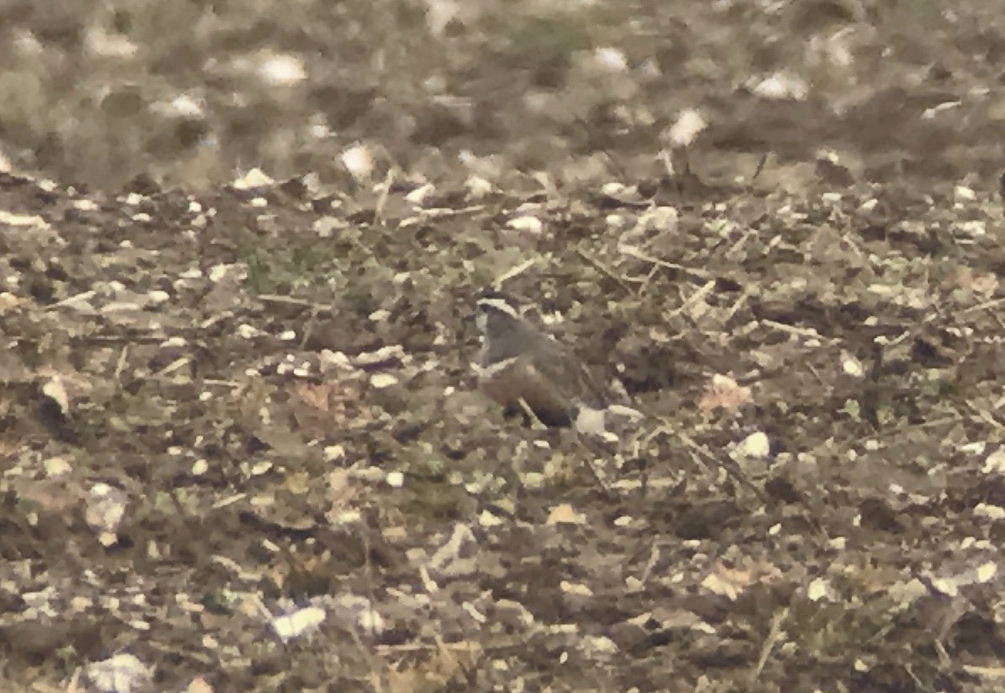
Dotterel are migrants here, passing through on their way from the winter in North Africa to Scandinavia for the breeding season. They stop off at traditional sites in spring and Choseley is one of those places where they appear regularly in late April and May. Numbers vary from year to year and some years there can be very few, so it is always good to see them while you can!
The rain was threatening to get heavier now, so we decided to have a quick drive round the fields to see if we could find any other birds. A narrow strip of bare ground between a field of oilseed rape and a maize game cover crop along the margin had a couple of game feeders placed in it. Several Yellowhammers were flying in and out of the neighbouring hedge, dropping down to the feeders. A large flock of Chaffinches flew up into the hedge from the maize as we pulled up. But surprise find here, was a Chinese Water Deer – not the sort of place you would routinely expect to find one of these!
There was nothing in the hedge or on the wires by the drying barns. It was cool and windy now, with the rain starting. It was time to call it a day now anyway, so we turned round and headed for home.
















